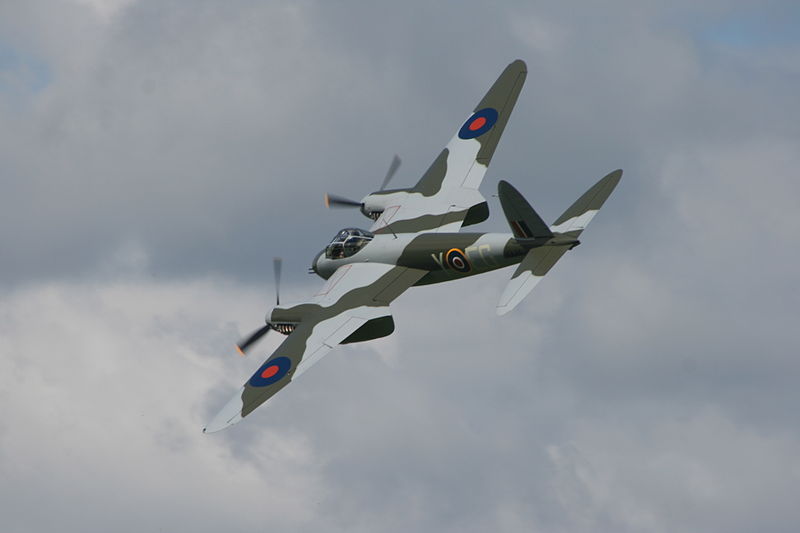Robert Beckhusen on the ongoing attempt to bring a long-ago crashed de Havilland Mosquito back to life:

De Havilland DH-98 Mosquito at the Ardmore Airport de Havilland Mosquito Launch Airshow, 2012 (via Wikipedia)
The de Havilland Mosquito was arguably the best British plane of World War II, the war’s most effective fighter-bomber and one of the most versatile military planes ever built. That’s why it’s strange so few of the wooden, twin-engine machines appear at air shows.
There are currently only three airworthy Mosquitos in the world.
A group of British engineers are trying to change that by bringing a Mosquito back from the dead. Since 2012, the U.K.-based People’s Mosquito project has raised funds and begun working to restore an ex-Royal Air Force Mosquito which crashed in 1949, was buried and then recovered 61 years later.
“A much beloved friend of ours, and our patron, Capt. Eric ‘Winkle’ Brown, once said that three British aircraft were preeminent in World War II,” Ross Sharp, the People’s Mosquito’s director of engineering told War Is Boring. “One was the Spitfire, the other was the Lancaster and the third was the Mosquito, and if you had to rank them, you’d put the Mosquito first.”
“That was due, I think, because it performed so many roles and performed them superbly.”
[…]
On Feb. 14, 1949, the NF.36 fighter RL249 suffered failures in both engines after takeoff and crashed near RAF Coltishall in Norfolk. Sgt. W.B. Kirby, the plane’s navigator, later died from his injuries. RL249’s remains were recovered in 2010, but the pieces are almost entirely unusable.
Instead, the People’s Mosquito team is building — largely from scratch — a Mosquito FB.VI variant, a highly-configurable fighter-bomber. The plane will thus be a “data plate restoration,” meaning the airframe, wings and engines will be fresh, but it will also contain some non-structural bits from the original RL249.
The original Mosquitos did not contain data plates. But that’s not necessary for the team to get the finished aircraft certified as a restoration.
“Providing you possess everything that is left of that aircraft, legally you are in possession of what our civil aviation authorities call ‘the mortal remains’ — that’s the technical term — and you can then restore it,” Sharp said.
“It’s going to be mostly new parts, of course, which in a predominantly wooden aircraft like the Mosquito is vital.”



